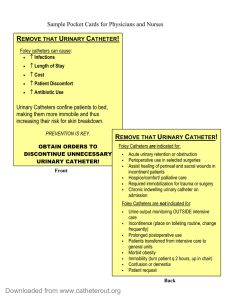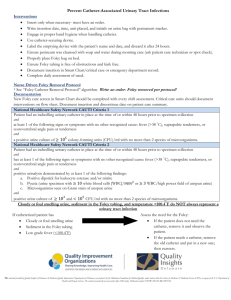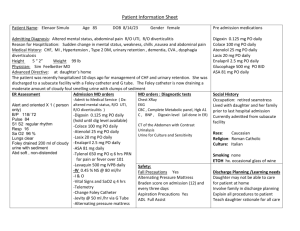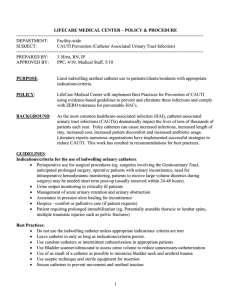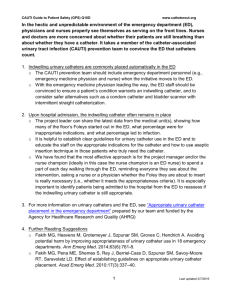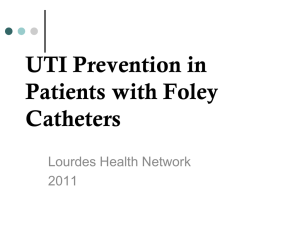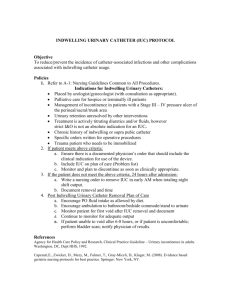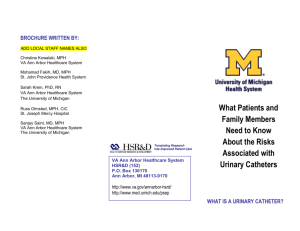DOC ENG
advertisement
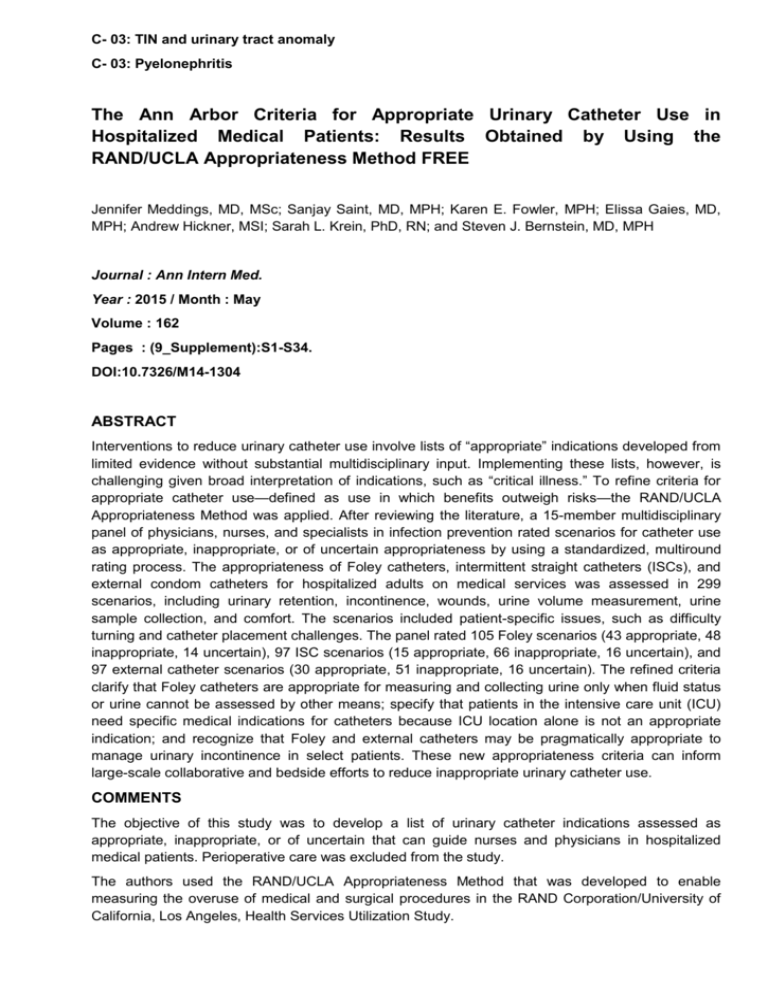
C- 03: TIN and urinary tract anomaly C- 03: Pyelonephritis The Ann Arbor Criteria for Appropriate Urinary Catheter Use in Hospitalized Medical Patients: Results Obtained by Using the RAND/UCLA Appropriateness Method FREE Jennifer Meddings, MD, MSc; Sanjay Saint, MD, MPH; Karen E. Fowler, MPH; Elissa Gaies, MD, MPH; Andrew Hickner, MSI; Sarah L. Krein, PhD, RN; and Steven J. Bernstein, MD, MPH Journal : Ann Intern Med. Year : 2015 / Month : May Volume : 162 Pages : (9_Supplement):S1-S34. DOI:10.7326/M14-1304 ABSTRACT Interventions to reduce urinary catheter use involve lists of “appropriate” indications developed from limited evidence without substantial multidisciplinary input. Implementing these lists, however, is challenging given broad interpretation of indications, such as “critical illness.” To refine criteria for appropriate catheter use—defined as use in which benefits outweigh risks—the RAND/UCLA Appropriateness Method was applied. After reviewing the literature, a 15-member multidisciplinary panel of physicians, nurses, and specialists in infection prevention rated scenarios for catheter use as appropriate, inappropriate, or of uncertain appropriateness by using a standardized, multiround rating process. The appropriateness of Foley catheters, intermittent straight catheters (ISCs), and external condom catheters for hospitalized adults on medical services was assessed in 299 scenarios, including urinary retention, incontinence, wounds, urine volume measurement, urine sample collection, and comfort. The scenarios included patient-specific issues, such as difficulty turning and catheter placement challenges. The panel rated 105 Foley scenarios (43 appropriate, 48 inappropriate, 14 uncertain), 97 ISC scenarios (15 appropriate, 66 inappropriate, 16 uncertain), and 97 external catheter scenarios (30 appropriate, 51 inappropriate, 16 uncertain). The refined criteria clarify that Foley catheters are appropriate for measuring and collecting urine only when fluid status or urine cannot be assessed by other means; specify that patients in the intensive care unit (ICU) need specific medical indications for catheters because ICU location alone is not an appropriate indication; and recognize that Foley and external catheters may be pragmatically appropriate to manage urinary incontinence in select patients. These new appropriateness criteria can inform large-scale collaborative and bedside efforts to reduce inappropriate urinary catheter use. COMMENTS The objective of this study was to develop a list of urinary catheter indications assessed as appropriate, inappropriate, or of uncertain that can guide nurses and physicians in hospitalized medical patients. Perioperative care was excluded from the study. The authors used the RAND/UCLA Appropriateness Method that was developed to enable measuring the overuse of medical and surgical procedures in the RAND Corporation/University of California, Los Angeles, Health Services Utilization Study. Overview of the RAND/UCLA Appropriateness Method (figure 1 of the article) The most common uses of Foley catheters, external condom catheter, and intermittent straight catheter are indicated in details, comparing recommendations from the literature and expert practical experiences. Analysis of appropriate indications and inappropriate uses focused on the following conditions: 1) patient cannot urinate due to urinary retention 2) patient cannot stop o control urination due to incontinence 3) clinician requests catheter to measure urine volume 4) urine specimen collection is needed to perform a diagnostic test 5) urine catheter is requested to provide comfort and/o convenience The use of a Foley or external catheter was assessed as appropriate to manage incontinence in a patient difficult for nurses to turn with their available resources because of morbid obesity or severe edema. Given the persistently high rate of Foley catheter use in the ICU, along with the growing hazard of multidrug-resistant organisms in nosocomial urinary tract infections and increasing rates and morbidity of Clostridium difficile infection, the authors hope that theseresults will encourage decreased placement and earlier removal of Foley catheters in the ICU. Perhaps the simplest but potentially most powerful panel assessment was that urinary catheters are inappropriate for monitoring urine solely because the patient is in an ICU. Pr. Jacques CHANARD Professor of Nephrology
